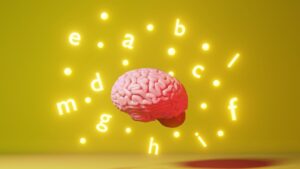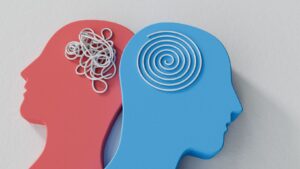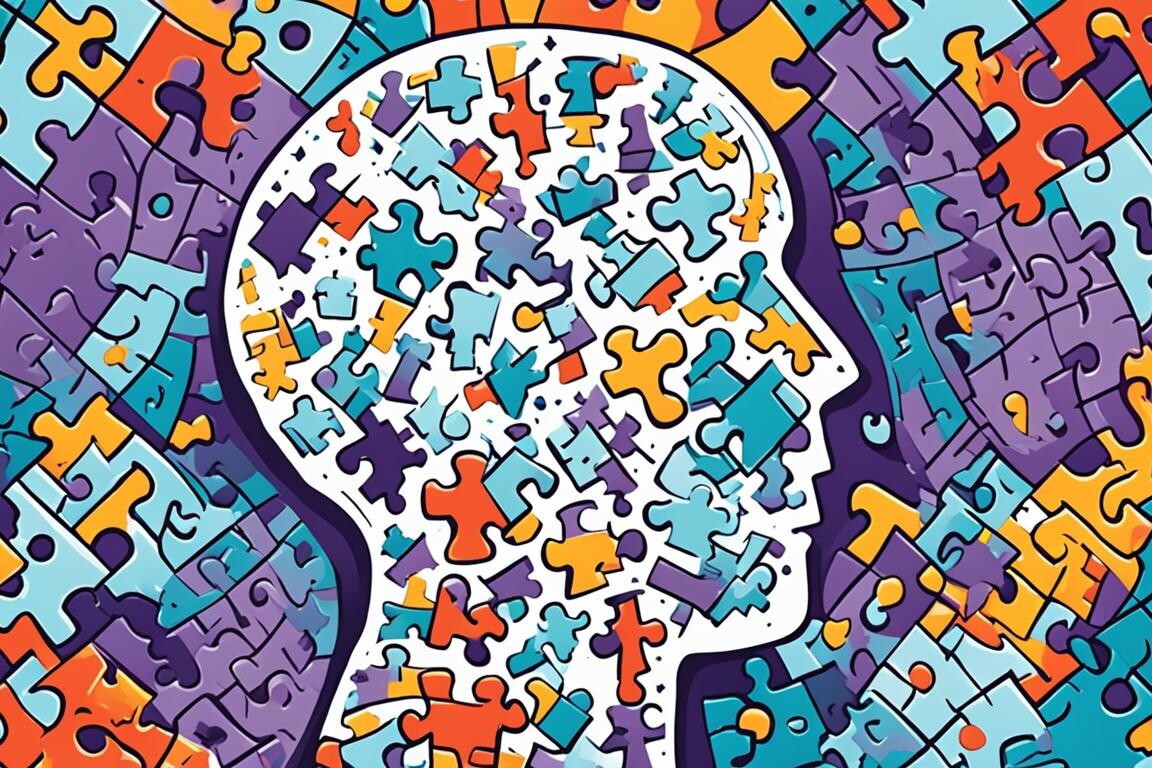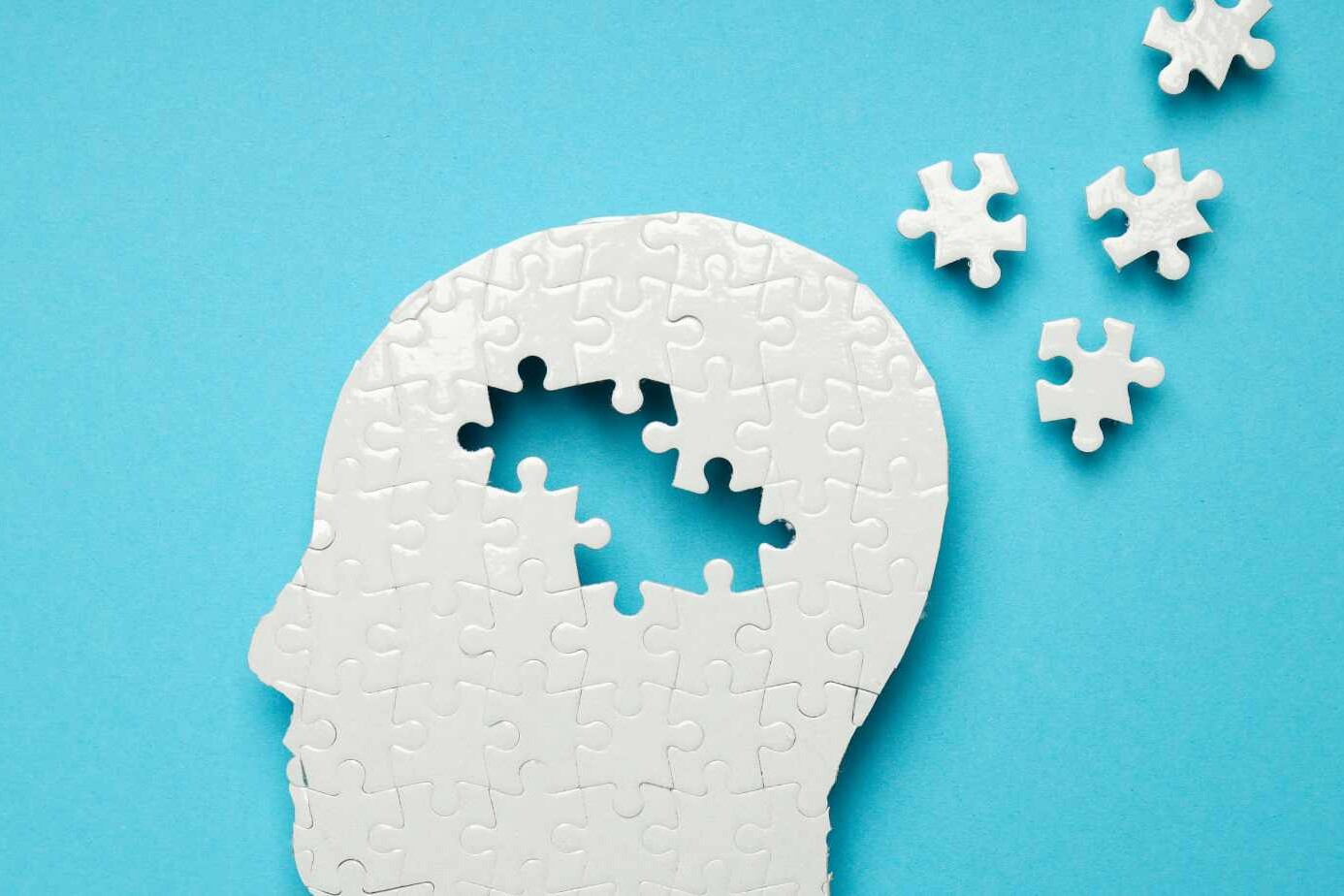Table of Contents
ToggleWhat is Alzheimer’s Disease?
Imagine a library where all your memories and thoughts are stored. Alzheimer’s disease is like a storm in that library, slowly making it hard to find your books (memories) and read them (think clearly). It’s a brain disorder that mostly affects older people, causing memory loss and confusion. The brain cells can’t talk to each other, which makes it hard to do everyday things.
How Alzheimer’s Disease Happens in the Brain

Let’s dive into what’s going on in the brain when someone has Alzheimer’s. Think of your brain as a busy city, where messages are like cars driving around. In Alzheimer’s, this city faces some problems. The Trouble with Neurotransmitters.
Neurotransmitters are like the cars in our brain city. They carry messages from one brain cell to another. The most important car in Alzheimer’s is called ‘Acetylcholine.’ In Alzheimer’s, there aren’t enough of these Acetylcholine cars, which means messages don’t get around as they should. It’s like having fewer taxis in the city, so people can’t get to where they need to go.
Receptors: The Parking Spots for Messages
Receptors are like parking spots where the neurotransmitter cars park to deliver their messages. In Alzheimer’s, these parking spots start to disappear or don’t work right. So, even if there are some Acetylcholine cars, they can’t park properly to deliver their messages. This is like having fewer parking spots in the city, making it hard for cars to stop and people to get out.
The Buildup of Bad Proteins
In the brain with Alzheimer’s, there are two bad proteins called ‘Amyloid’ and ‘Tau.’ Think of Amyloid as sticky gum on the streets that traps cars and causes traffic jams. Tau is like broken roads that make it hard for cars to drive. These problems make it very tough for messages to travel in the brain.
The Brain Cells Get Confused
Because messages aren’t moving right, the brain cells (like houses in our city) start to get confused and sick. They can’t talk to each other well, and slowly, some of them even start to close down. It’s like parts of the city slowly losing power and shutting off.
The Big Picture
In the end, Alzheimer’s makes it hard for the brain to send and receive messages. This is why people with Alzheimer’s have trouble remembering things, thinking clearly, and doing everyday tasks. It’s like the city’s communication system breaking down, causing confusion and problems all around.
Medicines for Alzheimer’s: A Closer Look
Treating Alzheimer’s disease involves different kinds of medicines. Each type works in its own way to help manage symptoms and improve quality of life. Let’s break down these medicines into simple terms.
Boosting Memory and Thinking

The most common medicines for Alzheimer’s are designed to improve memory and thinking skills. They work by increasing the levels of certain chemicals in the brain that are important for memory and cognition.
- Donepezil (Aricept): This medicine works like a booster for a key brain chemical called acetylcholine. It’s like adding more taxis in our brain city, making it easier for messages to get around. Donepezil is used for all stages of Alzheimer’s.
- Rivastigmine (Exelon): Rivastigmine also increases acetylcholine but works a bit differently. It’s like not only adding more taxis but also making sure they can take longer trips without running out of gas. It’s used for mild to moderate Alzheimer’s.
- Galantamine (Razadyne): Similar to the others, Galantamine boosts acetylcholine in the brain. It’s like adding more taxis and making sure they know good routes to take. This medicine is also for mild to moderate stages.
Slowing Down the Disease
- Memantine (Namenda): This medicine works differently. It regulates another brain chemical called glutamate, which is involved in learning and memory. Too much glutamate can be harmful, so Memantine is like a traffic controller, making sure that cars (messages) don’t move too fast and cause problems. It’s often used in moderate to severe Alzheimer’s, sometimes along with Donepezil.
Managing Mood and Behavior

People with Alzheimer’s can experience mood swings, anxiety, and even depression. There are medicines to help with these emotional changes.
Antidepressants: These are used to treat sadness and depression. They’re like soothing music in our brain city, helping people feel calmer and happier.
Anxiolytics: These medicines help with anxiety, making the person feel more relaxed. It’s like having a relaxing park in the middle of a busy city.
Antipsychotics: Sometimes, Alzheimer’s can cause confusion and hallucinations. Antipsychotics are used in these situations but cautiously, as they can have strong side effects.
Important Notes
- Individual Responses: People react differently to these medicines. What works well for one person might not work as well for another.
- Regular Check-ups: It’s important to have regular check-ups with the doctor to see how the medicines are working and to adjust them if needed.
- No Cure Yet: These medicines don’t cure Alzheimer’s. They help manage symptoms and improve quality of life.
Non-pharmacological interventions for Alzheimer’s disease are ways to help people with Alzheimer’s without using medications. Here are some simple examples:
- Exercise: Physical activity is beneficial for overall health, including brain health. It increases blood flow to the brain, promotes the growth of new brain cells, and strengthens connections between existing ones. Simple exercises like walking, gardening, or tai chi can improve mood, reduce stress, and enhance cognitive function. Regular exercise can also help manage other health conditions, such as high blood pressure, diabetes, and obesity, which are risk factors for Alzheimer’s disease.
- Mental stimulation: Keeping the brain active with mentally engaging activities can help preserve cognitive function and slow down the progression of Alzheimer’s disease. This could include activities like solving puzzles, playing memory games, reading books, learning new skills or languages, or engaging in educational programs. Stimulating the brain regularly helps maintain neural connections and promotes cognitive reserve, which can delay the onset of symptoms or lessen their severity.
- Social interaction: Human connection is vital for emotional well-being and cognitive health. Regular social interaction with family and friends or participation in group activities can provide emotional support, reduce feelings of loneliness and depression, and improve the overall quality of life for individuals with Alzheimer’s disease. Engaging in conversations, sharing memories, and participating in social events can stimulate the brain and help maintain cognitive function.
- Healthy diet: A nutritious diet plays a crucial role in maintaining brain health and overall well-being. Eating a balanced diet rich in fruits, vegetables, whole grains, lean proteins, and healthy fats provides essential nutrients and antioxidants that support brain function and protect against cognitive decline. Foods like fatty fish (rich in omega-3 fatty acids), berries, nuts, and leafy greens are particularly beneficial for brain health. Limiting intake of processed foods, sugar, and saturated fats is also important for overall health.
- Routine and structure: Establishing a predictable daily routine can help individuals with Alzheimer’s disease feel more secure and less anxious. Consistent routines for activities such as meals, exercise, and personal care can reduce confusion and agitation. Visual cues, such as calendars, clocks, or daily schedules, can help reinforce routine and provide a sense of structure and control.
- Music therapy: Music has a profound effect on the brain and can evoke powerful emotions and memories. Listening to familiar music or playing musical instruments can improve mood, reduce anxiety, and promote relaxation for individuals with Alzheimer’s disease. Music therapy sessions, where trained therapists use music-based activities to address specific therapeutic goals, can enhance emotional well-being and communication skills.
- Art therapy: Engaging in creative activities like painting, drawing, sculpting, or crafting can provide a means of self-expression and stimulate cognitive function. Art therapy allows individuals with Alzheimer’s disease to engage in meaningful activities that promote self-esteem, reduce stress, and enhance overall well-being. Even for those with advanced stages of the disease, simple art activities can still offer enjoyment and a sense of accomplishment.
- Sensory stimulation: Providing sensory experiences can promote relaxation, reduce agitation, and improve mood for individuals with Alzheimer’s disease. Activities such as gentle touch, massage, aromatherapy (using scents like lavender or chamomile), or spending time outdoors in nature can engage the senses and evoke positive emotions. Sensory stimulation can be tailored to individual preferences and needs to create a calming and comforting environment.
How can we help people with Alzheimer’s Disease?
Helping people with Alzheimer’s disease involves a multifaceted approach aimed at enhancing their quality of life, managing symptoms, and providing support for both the individual and their caregivers. Here are several ways to assist individuals with Alzheimer’s:
- Educate Yourself: Learn about Alzheimer’s disease, its progression, symptoms, and available treatments. Understanding the condition can help you provide better care and support.
- Create a Safe Environment: Ensure that the living environment is safe and conducive to the individual’s needs. Remove potential hazards, install handrails, and use locks on cabinets containing dangerous items.
- Establish Routines: Maintain consistent daily routines as much as possible, as this can provide structure and familiarity, which may help reduce anxiety and confusion.
- Encourage Physical Activity: Regular exercise can improve mood, reduce agitation, and promote overall well-being. Encourage activities such as walking, gardening, or chair exercises tailored to the individual’s abilities.
- Provide Cognitive Stimulation: Engage the person in activities that stimulate cognitive function, such as puzzles, reminiscence therapy, music therapy, or art therapy.
- Ensure Proper Nutrition: Offer nutritious meals and snacks and ensure the individual stays hydrated. Consider consulting a dietitian for personalized dietary advice.
- Manage Medications: Ensure that medications are taken as prescribed and manage any side effects or interactions. Keep a medication schedule and consider using pill organizers or medication reminder apps.
- Offer Emotional Support: Alzheimer’s can be emotionally challenging for both the individual and their caregivers. Offer emotional support, reassurance, and empathy. Encourage participation in support groups or counselling.
- Use Memory Aids: Utilize memory aids such as calendars, to-do lists, and reminder notes to help the individual remember important tasks and appointments.
- Communicate Effectively: Use clear and simple language when communicating, and break down tasks into smaller, manageable steps. Be patient and respectful, and avoid arguing or correcting the person.
- Provide Respite Care: Caregiving for someone with Alzheimer’s can be physically and emotionally demanding. Arrange for respite care to give caregivers a break and prevent burnout.
- Plan for the Future: Work with the individual and their family to establish legal and financial plans, including advance directives and power of attorney, while the person with Alzheimer’s is still able to participate in decision-making.
- Stay Connected: Encourage social interaction and maintain connections with friends, family, and community groups. Social engagement can help reduce feelings of isolation and depression.
- Seek Professional Help: Consult healthcare professionals, including doctors, nurses, social workers, and specialists in Alzheimer’s care, for guidance, support, and medical management of the condition.
About The Author

This article is medically reviewed by Dr. Chandril Chugh, Board-Certified Neurologist, providing expert insights and reliable health information.
Dr. Chandril Chugh is a U.S.-trained neurologist with over a decade of experience. Known for his compassionate care, he specializes in treating neurological conditions such as migraines, epilepsy, and Parkinson’s disease. Dr. Chugh is highly regarded for his patient-centered approach and dedication to providing personalized care.
→ Book a consultation to discover which remedies suit your needs best.




